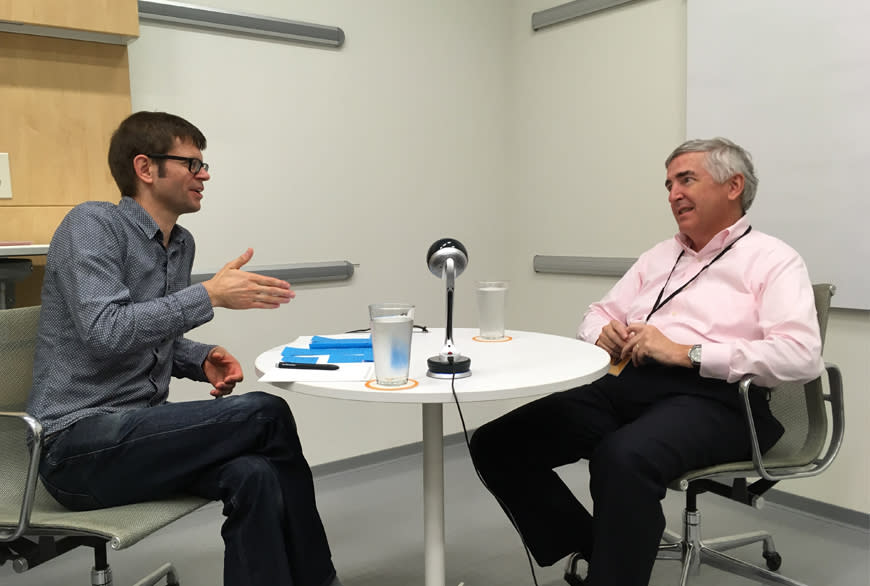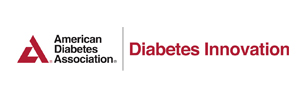

This episode of The Resonance Test was produced in conjunction with the American Diabetes Association.
John Brooks—the managing director of Healthcare Capital, LLC and former president and CEO of the Joslin Diabetes Center—is a something of a legend in the diabetes sector. As much an inventor as an investor, he brings a spirited intelligence and diverse experience to fighting this chronic disease. We’re pleased to welcome him to The Resonance Test. In this energetic conversation, Brooks and Continuum SVP Mike Dunkley range all over the diabetes ecosystem, covering the move from a technological focus to more holistic solutions, how AI and machine learning might provide new opportunities, what future business models might look like, and in general, how we need to develop new approaches to diabetes. Tune in to hear Brooks say:
• “I just have a strong passion to see what I can do to try and help the now 461 million people around the world that have diabetes.... We all look at the numbers. It’s only escalating. We need to think differently.”
• “All of the players need to be in the solution business.”
• “Part of the problem is there hasn’t been a lot of economics to reward helping people not develop a chronic condition.”
• On doctors: “They’ve got 15 minutes to try to come up with something intelligible and if they’re spending 10 minutes to try to get the bottom of it, that’s not a good use of their time.”
• “If the AI enables better understanding of what’s going on with people with diabetes, the key is: How do the healthcare providers, nurse educators, clinicians, partner care doctors, endocrinologists, how do they adopt? Because, at the end of the day, their economics are important.”
Host: Pete Chapin
Editor: Kyp Pilalas
Producer: Ken Gordon
MIKE DUNKLEY
John, it’s a real pleasure to sit down and chat with you. You come to this [conversation] with a long career in innovation, healthcare, executive leadership, and [investing]. There’s this overarching theme and strong interest in diabetes. I wonder if you could just add some color [here].
JOHN L. BROOKS III
As it turns out, 25 years ago, our then-three-year-old son was diagnosed with type 1 diabetes. And, to be honest with you, there was no family history [of diabetes, and I] really didn’t have any appreciation of why that happened. And, maybe like a lot of other parents with kids with a particular disease, you decide, “Hey, I need to do something about this; I need to learn about this disease.” For the last 25 years—our son just had his 28th birthday last week—I said, “What can I do to get myself up to speed on understanding diabetes—not just type 1, but all aspects of diabetes?” And I just made a conscious effort to be a continuous learner [and] make sure I could read as much as possible. And I tell people, in the early days, whatever I read, I was lucky to absorb about 5% of it. But, over time, you start getting fairly knowledgeable.
I had the opportunity when I was in the venture [capital] industry to look at lots of companies in diabetes, which was great. Obviously, lots of companies that were working on, at the time, noninvasive glucose sensors, [which were] next-generation ways to help people with diabetes. And that was really the opportunity with one of my partners and I at Prism [Venture Partners]. He was a medical device guy as well. We ended up creating the idea for the Omnipod, the insulin Omnipod. That was born out of a flight that he and I took in 2000 back from the West Coast. I was describing all the challenges of insulin initiation and administration for our son, and we came up with this idea of a disposable insulin delivery system based on another opportunity that we were working on in the disposable hearing aid area. So, we thought the idea [of] disposability would be disruptive.
MIKE DUNKLEY
And this is the infamous napkin sketch?
JOHN L. BROOKS III
Exactly, which unfortunately, we weren’t smart enough to keep. But that led to [the Omnipod] and then I had the opportunity—as I joined the board at the Joslin Diabetes Center—to work my way up the food chain as chairman and then, about seven years ago, I became the CEO, and did that for the last five years up until two years ago. And it’s really been an opportunity for me to even further appreciate the research side, the clinical delivery side, and, on a global scale, the magnitude of the diabetes pandemic. So, for the last two years, I’m still driving all that through my board work and advisory work, consulting work, and I just have a strong passion to see what I can do to try to help the now 461 million people around the world that have diabetes… principally, type 2 diabetes. But, as we all look at the numbers, it’s only escalating. We need to think differently.
MIKE DUNKLEY
So, thinking differently is kind of a theme, I think, for the conversation. It feels like we’re maybe [at] an inflection point where, you know, we’re not quite 100 years since insulin was first identified and developed, and there’s been a lot of really tremendous development when you look at the insulin itself—the delivery systems, the measurement systems—but we’re starting to move towards this kind of solution space. And maybe Omnipod was one of the first inventions that started to look at [diabetes treatment] more holistically. Do you want to just give your perspective on where we are in that trajectory?
JOHN L. BROOKS III
I think you’ve hit it on the head. I mean, we’re transitioning away from the device world or the pharmaceutical world where the focus was on, you know, “Here’s a device—let me get through the FDA. Let me find some key opinion leaders and try to convince them to adopt the product in the pharmaceutical industry, the insulin producers.” I mean, the focus [here was] on: “How many more vials of insulin can I sell?” And now, I think, there’s an appreciation to your point. All the players need to be in the solution business. You can’t just be thinking about selling the product; you need to think about, “How do you participate in helping, whether it’s a payer, whether it’s [a] provider, whether it’s a patient, their family?” How do you basically come up with a way to say, “Hey, I need to be recognizing that I need to be part of that. I need to help drive adherence. I need to help patients make better decisions. I need to take the burden of diabetes off of them. I need to give them an opportunity to have their diabetes management undertaken in a way that works for them”? You know, we don’t have a one-size-fits-all mentality.
But I think the next big leap that we’re just starting to emerge in is the ability, and not that we want to use AI and machine learning as buzzword[s], but we have now an opportunity through the power of sensors, whether they’re CGMs [continuous glucose monitoring devices]—[there are] a lot of new CGMs coming on the market, obviously, [and] some of [them are] related to driving the artificial pancreas—but now we have an opportunity to take a sea of data that’s coming off of devices, that’s coming off of the sensors, physiologic devices, Fitbits, all these different data points are in the cloud. In the early days, people thought, “Well, this is great. I’ll push it back to the doctor, push it back to the patient.” Clearly, that was never going to take hold. It’s really the idea of, “How do I take that data and turn it into actionable intelligence? How do I actually use it to look at patterns?” And then I could use that to inform doctors to think about different care plans. Patients [could] understand what they could do to try to optimize their care. And that really sets the stage then for better decision support—automated decision support—decision support taking place behind the scenes, if you will, and ultimately helping to drive changes in the economic environment, where we expect that we’re going to see more and more payments for innovation—for solutions—being driven off of outcomes, being driven off of taking costs out of the system.
We’re starting to understand that diabetes is a 24/7 disease and [asking:] “How do we help patients manage the disease, again, on their terms, at home, and recognize that they’re trending in the wrong direction and intercede… [How do we] keep them from getting into trouble, which is going to lead to potentially a hospitalization or ED visit?” I think we’re just starting to scratch the surface where we can really provide this oversight in the background, engage with the patient in a way that they want to be engaged, and understand the challenges of behavior, lifestyle, family situation, economics, the home, and all of that. So, I think the next evolution is going to be really this idea of having the ability to basically help people manage diabetes, and they don’t have to be the ones doing it. It’s really being done on their behalf.
MIKE DUNKLEY
I want to talk more about outcomes, which you mentioned briefly there. But maybe [we should] distinguish a little bit between systems designed for people with type 1 diabetes and systems designed for people with type 2, because [it] seems like there [are] two fairly distinct opportunities. You mentioned [the] artificial pancreas, which is about tying the measurement to the delivery and having some kind of algorithm—AI-driven, potentially—in the middle of that, automating that and taking that burden away; whereas type 2 is more of a behavior change challenge. Do you think of them separately like that?
JOHN L. BROOKS III
I think that’s a good way to think about it. As you indicated, [with] type 1, the objective at the end of the day is: “Can we emulate the way a normal pancreas works?” The opportunity—now that we’re able to move away from episodic finger sticks [and] we’re getting different blood glucose readings—now we have an opportunity, almost on a continuous basis, to really look at glycemic variability [and] really understand what’s driving it, whether it’s… the foods [one eats], whether it’s stress, whether it’s hormones, whether there’s sleep or lack thereof. So, the idea is… how to then use the power of that information to drive much more precise insulin doses that keep those folks in a very good range.
Over time, I think there’s an opportunity where the algorithms will become adaptive. They’ll understand that individual. They’ll understand what their habits are. They’ll understand what they do Monday through Friday… the weekends are different. And all of a sudden, it’ll really help that person optimize the care in a way that is [tailored to] exactly who that person is. So, that’s exciting. Where[as], in the type 2 area, obviously, at the end of the day, people’s pancreases are functioning. The problem is, they probably can’t produce enough insulin because of insulin resistance [and/or] obesity. A lot of people with type 2 tend to be somewhat reticent to go on insulin. They’ve been convinced that that’s really the drug of last resort—which isn’t true. Historically, primary care doctors, who are very concerned about the risks, didn’t have the resources to really support insulin initiation for type 2s. And now, I think there’s a [recognition] that a lot of that heavy lifting burden can be taken off of people with type 2 [and] that, at the end of the day, insulin is actually [about] trying to augment what your body produces, and it’s not a drug of last resort. It could be a drug [of] first resort.
The other part of it, I think, which is the heart of type 2 is, as you alluded to, helping people with a behavior change. It’s really a family situation because people want to think differently about the foods they eat, their lifestyle, their habits, their level of activity, you know, all the other things that are going on. And, historically, I think a lot of people with type 2 didn’t even fully understand what it meant to have diabetes. [There are] some opportunities now, with some of these sensors—if you put them on a type 2 [monitor] just for a week, all of a sudden, people get a real sense that: “This is what’s going on!” Because a lot of people think, “Well, I can somehow sense what my blood sugars are,” and most type 2s check their blood sugars fairly infrequently. And, here’s an opportunity to basically show them, “Here’s what’s going on; here’s what’s spiking your blood sugars,” and getting an opportunity [for them] to understand what’s happening while they’re sleeping. And I think there’s been some evidence that tends to really give people [a] sense [of]: “That’s me. I’m just not a statistic...”
And I think the other issue is [that] a lot of people understand the downstream complications of diabetes, but a lot of times, unfortunately, we wait until they’re symptomatic. And, obviously, that’s not a good solution because all [of] the sudden, maybe they’re starting to have vision problems, cardiovascular problems, neuropathy problems. I think the healthcare system’s understanding that we need to be far more proactive [since we’re faced] with just an explosion of diabetes in this country [is essential]… Right now, we have about 30 million people, but it’s projected [that] by 2050, if we don’t aggressively do something, [we] could have close to one in three Americans with diabetes and, globally, 461 million people or so. And those numbers could be tripling in the next 20 years. So, I think the real answer is we need to think as we’re talking… very differently. Not that we’re going to throw technology [at the problem] and think it’s gonna solve it, but we can use technology and analytics and machine learning [and] big data and understanding behavior change to help really wrestle this disease and give people an opportunity to live their lives and not have diabetes be this worrisome, burdensome thing that a lot of people aren’t sure they want to invest in.
MIKE DUNKLEY
So there [are] some very sobering statistics in what you just said, in terms of the numbers of people affected, but, obviously, an opportunity is huge to help them improve their lives, right? And when I think of the various solutions for type 1, type 2, I think it’s relatively straightforward to sketch them out on a whiteboard and say, “These are the key pieces and this is how it’s going to work.” But then you try [to] implement and scale these, and you run up against a whole host of different complexities and regulatory concerns, business models… Can you talk a little bit about that? As healthcare goes through the transformation, what are the key things that people are going to have to work through?
JOHN L. BROOKS III
I think it’s a great question. And if I just step back a little bit, and then I’ll get right to that… We’ve been talking a little bit about mechanical or biomechanical and analytic approaches to addressing diabetes. But, certainly, there’s a lot of work being done in regeneration, regenerative medicine. Some of the work that’s being done to really see if there’s a way to basically induce, or use different cells in the body, or to find a way to basically regenerate beta cells. And, obviously, the key in type 1 is, “How do you thwart the immune system for initiating the attack on the pancreas?” But companies are looking to do that within capsulization. There [are] companies that are looking for ways to basically inhibit the ability of the regulatory T cells for going after that. There’s a lot of interesting activity going on in the biologic side, if you will. There [are] other people looking at even this area of the microbiome. You know, there [are] certainly some implications that, changes in the gut bacteria [are relevant]: Is it possible that [they] trigger an autoimmune response in type 1s? In the case of type 2[s], is it correlated—which it seems to be—to insulin resistance? But you know, I just wanted to put that out there…
MIKE DUNKLEY
And you’re absolutely right to because it’s easy to think that this is a chronic disease and we have to manage it as a chronic disease, but if there are some more fundamental interventions, you can make this an acute disease that is treatable.
JOHN L. BROOKS III
Exactly. A lot of our healthcare system historically has been targeting acute diseases. And here we have a situation where diabetes [is] clearly a chronic disease. And, in some ways, healthcare for the most part is still kind of bricks-and-mortar-driven. And, if you think about it, that’s how providers get paid, fee-for-service. But we’re seeing opportunities, as we said earlier, with outcomes-driven measurements, value-based healthcare, where we want to put more of the incentives on keeping people literally out of a hospital. We want to make sure that we’re basically helping people stay in a good range so that we can hopefully defer, if not diminish, their likelihood of developing diabetic complications. But then, as you said, it’s complicated in this country because [of] how doctors get paid, reimbursement… You know, [we have] 50 states [and] we have 50 different flavors of how healthcare economics are driven. We have lots of issues where we’re still biased towards treating the consequences of diabetes.
Then this idea of looking at prevention. Historically, there hasn’t been a lot of money to look at [family histories]. We generally know, through family history, [about the likeliness of a person getting diabetes]. There’s even some work being done in the genomics area. We can pretty much predict who’s likely to become a person with diabetes. And obviously, we know today there’s 90 million people in the US that are “pre-diabetic.” But, generally speaking, we don’t do a lot with that. Obviously, the CDC has made some progress with diabetes prevention programs, but it hasn’t been fully baked into our healthcare system. And again, part of the problem is, there hasn’t been a lot of economics to reward helping people not develop a chronic condition—so that’s a barrier.
And in other parts of the world—whether it’s the Middle East, China, or elsewhere—there’s still a focus on building new hospitals, bricks-and-mortar facilities, and the idea that the patient with diabetes goes to a facility and, in some cases, they’re just getting supplies, and [in] other cases, they’re getting some of what they need to live with their diabetes for the next month. But the nature of diabetes is: How do we really help those people in their homes? How do we educate people, literally, on how our bodies work? The thing that I always find fascinating is the fact that a lot of people with diabetes don’t really know what it means. A lot of people, for instance, well, they believe, “Okay, I got to avoid sugar,” but that big bowl of pasta, rice: That’s great, that’s healthy, with no real appreciation of, “Well, how does it break down? It becomes glucose.” And then the other part of it, I think a lot of people just feel: “Well, I feel okay. All these statistics that you’re giving me… they don’t apply to me.” There’s just a lot of that denial. There’s also a sense of, in some populations, fatalism. They just think, “Well, it’s been in the family, and [there’s] nothing I can do about it.” To come back to your main question there, as we have heard, healthcare is complicated. A chronic condition’s complicated because we’re trying to treat it in many cases in an acute-care world.
The other opportunity is, essentially… just knowing in this country and globally that… the obesity epidemic, if you will, [is] driving diabetes. Frankly, other than some efforts to try to help people lose weight—and, again, if the prescription that’s been generally given, “Hey, you want to lose weight and exercise”—for most people, that just doesn’t translate. I think we need to think differently about the reimbursement. We need to think differently about being proactive and prevention. We need to think differently about recognizing that diabetes is really an at-home disease… How do we help people? Maybe it’s through telemedicine. Maybe it’s through remote diagnostics. Maybe it’s through coaching. The idea is that we need different approaches. And then I think the point is different reimbursement and business models, where we’re getting away from the idea of episodic payments.
MIKE DUNKLEY
So, there’s a key part in all of this, right, which we mentioned a couple of times—outcomes—which feels critically important. But I guess that, in its own right, is very difficult to align around. What is the right outcome for a patient with diabetes? Maybe it’s different for everybody. This kind of traditional key clinical outcomes—people focus on like A1C—but that doesn’t tell the whole story by any means, even clinically. Let alone in terms of what benefits the patient in a nonclinical way. Are you optimistic that we can align on a set of outcomes for the industry that could then be the standards against which value-based payments are made or risk-based payments are made?
JOHN L. BROOKS III
I think you’re spot on. I guess the answer is we have to, because otherwise, we just have this runaway freight train, if you will, that’s not going to be stopped. But the real answer is, if the only outcome measurement is A1C, that doesn’t correlate to—I think we appreciate that glycemic variability is an issue. And then the element that relates to diabetes… [for] most people, we need to understand: “What’s their lipid status, cholesterol?” Certainly, there’s a correlation with hypertension that could lead to kidney disease. I think we’re appreciating the fact that even depression affects people with diabetes. Or, if people aren’t feeling good about themselves, are they likely to be proactive in their care?
The real key is, we ought to have some standardized mechanisms so we can really drive the appropriate clinical outcomes, which will then support the right economic outcomes. The key is, again, to think about looking at how people are doing over a longer period of time because, “[For] A1C, I’m [potentially] measuring control for 90 days.” But, at the end of the day, are we really helping people? If they’re early diagnosed with diabetes, we can reverse it. What are the incentives to do that? And then, I think the other part of it is really understanding that diabetes is kind of this driver of all these comorbid conditions. The key is, we need to look at people holistically… and again, that just makes it harder, but that’s the way we have to look at it.
MIKE DUNKLEY
Absolutely, we have to take this incredibly complex disease [with its comorbidities] and reduce it down, ultimately, to a set of measurable outcomes that can be used to drive the new business models. That seems like a really important but tough challenge.
JOHN L. BROOKS III
Yeah, exactly. Right.
MIKE DUNKLEY
You mentioned AI and this need for intelligence to make sense. And that’s almost certainly going to have a role in behavior change and coaching and helping people with their lifestyles and decision-making. But there’s got to be an ongoing role for the humans in the loop here, the providers that can help interpret this and give support and appropriate coaching to people. I wonder if you have any thoughts on the providers in the future and how they’re going to live with this technology, and how are they going to work together so we get the best of AI and the best of what providers [can contribute].
JOHN L. BROOKS III
I think it’s a great question in the sense that, if the AI enables better understanding of what’s going on with people with diabetes, then the key is: How do the healthcare providers, nurse educators, clinicians, primary care doctors, endocrinologists—how do they adopt? Because at the end of the day, their economics are important.
In the early days, people thought, “Well, all this information is going to be available to the providers and they can monitor and see which patients are problematic.” But the greatest fear was: Did [providers] think they were going to bear liability if someone reported a hypoglycemic event and they didn’t act on it? The other part of it is, in a lot of cases: [Providers are] being tied to, really looking at [the idea that]: “I get paid for time with the patient, the physical.” And we’re just starting to see some glimmers [of change] in a number of states, and a number of payers are now starting to say that a diabetes connection with the patient can be done electronically—[via] telemedicine—and then that the reimbursement ought to be the same. Why are we penalizing a situation where, in fact, for a lot of patients, driving to the hospital, paying for parking, waiting in the waiting room, isn’t what they want?
Many other industries have figured out, “Hey, let’s engage with people where they are.” And frankly—with wearables, with sensors, all the information that’s needed to understand the physiologic condition—is available. We need to come up with a way that… allows… physicians to be effective and understand how to reduce the burden of spending a lot of time documenting in an EHR system what they’re doing. Then really trying to provide insights to the patient, and, I think, with clinical decision support capabilities, we should be able to help doctors [and] nurses zero in on all the things that are going on with [their] patient[s]. Here are the two things that, for this particular intervention encounter, you want to have them hone in on. So, the idea is we can also help doctors understand what’s going on, and move well beyond the days where they’re just looking at a big printout from their blood glucose or CGM, and we’re really trying to make sure we’re giving them the opportunity to do what they do best in getting away from, whether it’s the bureaucracy or documentation or the fact that they’ve got 15 minutes to try to come up with something intelligible (and if they’re spending 10 minutes to try to get to the bottom of it, that’s not a good use of their time).
MIKE DUNKLEY
Absolutely. So, John… in closing: Do you want to quickly say what you’re going to do next? What you’re interested in now?
JOHN L. BROOKS III
Yeah, [I’d] love to. Hopefully, you get a sense that I’m pretty passionate about what I do. The journey that I started 25 years ago hasn’t abated at all. I’m currently involved with a number of diabetes companies as either chairman of the board, or on the board or [as] an advisor, a consultant, and it really is from an international standpoint. I think, at this point in time, my hope is that I can help bring some insights, bring some encouragement. [I provide] help—especially for early stage companies—[regarding] how to really understand, as they develop a next-generation solution… where they’re going to need to be a few years down the road, as we anticipate what the regulatory requirements… [and] the reimbursement requirements [will be]. [I guide them on] how they’re going to participate in this “outcomes” ecosystem and [on] understand[ing] what the value proposition is. And that’s kind of fun, because you’ve got a lot of people excited about solving some element of diabetes and, a little bit that we know about healthcare is, it’s evolutionary, not revolutionary. So, if I can give them some advice or coaching or different points of view, my hope is that it keeps moving us in the right direction.
Read the Dialog Box version of this conversations.





